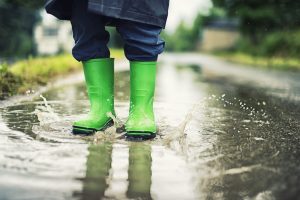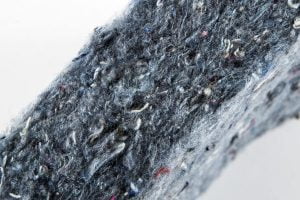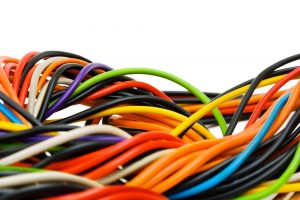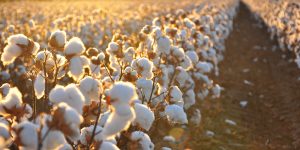It is easy to pay lip service to the need to protect our planet.
We know at Chieftain Fabrics that it is essential to do more than this. Planning a sustainable future for our company and our products is vital if we are to grow and develop.
Our products are made using the earth’s natural resources and yet these resources are limited. It is crucial therefore, that we develop our formulae whilst considering the environ- mental impact of our production.
It is not an easy task to produce a high quality, high performance vinyl fabric that has little impact on the environment. Here, at Chief- tain Fabrics, this is our goal. Through making small frequent changes to our ingredients and production methods, we hope to eventually manufacture a coated fabric that is PVC free and yet fulfils all the requirements of a
high-performance contract fabric. Our production team plan to produce this by 2020.
In the meantime, however, let us tell you about the changes we have already made and those we plan on making this year, 2018.
Organic Cotton Backing Cloth
In 2016 Chieftain Fabrics replaced all conventionally-grown cotton with organic cotton. This was done in order to lessen the environmental impact of our fabrics.
What is “organic cotton?”
Organic cotton is grown using methods and materials that have a low impact on the environment without the use of pesticides and synthetic fertilizers. 11% of all pesticides used in the world are used on just one crop: cotton.
Also, in order to gain organic status all organic cotton is grown from non-genetical- ly modified seeds.
Organic farmers use crop rotation, compost, cover crops and weed by hand or machine. They rely on the seasons for defoliation rather than on toxic chemicals.
Water
As a result of increased organic matter in the soil, water is retained more efficiently. Also, as there are no pesticides or fertilizers used in its production, organic cotton farming does not lead to groundwater contamination.
Emissions
Organic cotton produces far fewer CO2
emissions to the air than the production of conventional cotton with only 3.75 kg of CO2 being emitted per ton of spun fibre. Conven- tional cotton production produces 5.89 kg of CO2 on average.
Why choose organic cotton?
Supporting organic agriculture is essential to creating improved working conditions for farm workers. By choosing organically grown cotton, we reap all the benefits of cotton, its strength and beauty while minimizing harm to both humans and our planet.
Organic Pigments
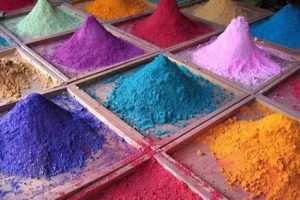
All pigments used in our products are organic.
That is to say that all of our pigments are made from natural sources such as plants and plant products or other carbon-based life forms.
They contain no heavy metals and are more stable than inorganic dyes.
Organic dyes allow for high intensity bright colours.
Organic pigments are based on carbon rings or carbon chains. Inorganic pigments are not based on carbon and could consist of metal oxides or other naturally occurring ingredients.
From a standpoint of molecular structure, that is the primary difference, although organic pigments can contain inorganic elements that help stabilize the properties of the organic, carbon-based component.
Recycled Polyester
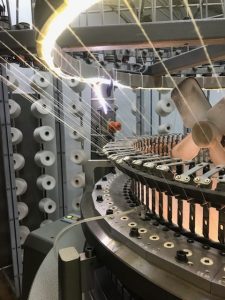
The reason recycled polyester is considered a green option in textiles today is because the energy required to make the recycled polyes- ter is less than what was needed to make the virgin polyester in the first place, so we save energy.At Chieftain Fabrics, we use recycled polyester thread which is made from resin produced from plastic bottles recovered from landfill.
We’re also keeping plastic bottles out of landfill.
Most people believe that plastics can be infinitely recycled, creating new prod- ucts of a value equal to the old bottles that they dutifully recycle. Unfortunate- ly, this is not the case. Every time plastic is recycled, the polymer is degraded and must be used to make lower quality products.
So, for example, recycled plastic could be made into products such as polyester fibres, casing for electric wires, polyester filler for pillows or carpets. These second generation plastics may be recycled a second time into carpet, speed bumps or even park benches.
We recycle our PVC with P.P.H.U Kajmax in cooperation with EMABO (a member of Recovinyl).
Our Packaging
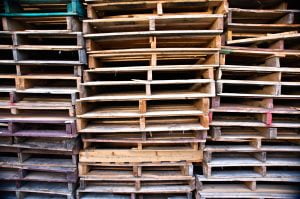
All of our pallets are made from recycled wood sourced from FSC approved mills in the United Kingdom and Spain. We use and reuse all of our pallets for shipping. All cardboard too, is recycled and sourced from FSC approved sources including the cardboard cores we use to package our fabric. We reuse packaging where possible and recycle when necessary.
Only recycled polythene is used to package our vinyl and this in turn is recycled.
In our main office, we print invoices and statements only where it is unavoidable. We sepa- rate all waste and use only energy-efficient light bulbs.
Recycling our Products
We recycle approximately 500kg of PVC every month.
Our PVC is recycled mechanically, not chemically. It is shredded into particles of approximately 8mm. This is the ideal size for the next stage of recycling as it can be immediately used on the production line for its next incarnation.
The shredded PVC can be extruded, coated or modified through granulation, powdering or mixing with other products.
Its applications are numerous.
Our products go into making wellington boots but it is also frequently used for insulation or electric cable coating amongst other things.
